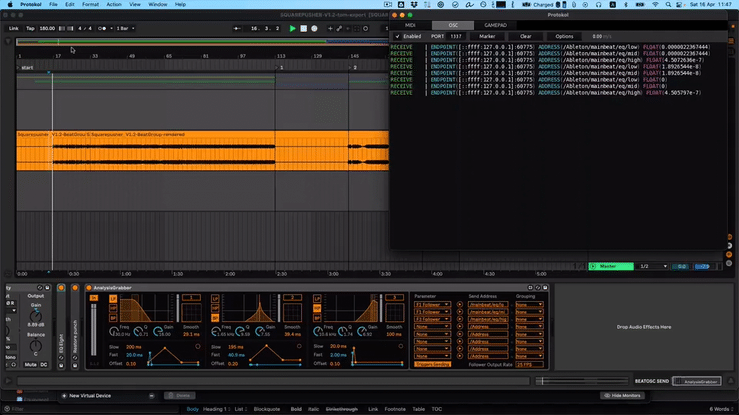INTRODUCTION
Looping has been around for quite some time and nowadays the internet is crowded with musicians recording themselves and building layers upon layers. In my diploma graduation concert in 2004, one part of the exam was to play a piece alone. I decided to do a looping performance, which I enjoyed very much. Ever since, I have been wanting to explore the realm in which sound and light are triggered by my performance on double bass and interacting with technical gear.
I’ve been fond of technology ever since playing and studying music. In this project, looping technology (recording myself, playback and stacking multiple layers) is a key technique. In addition to this, I’m using (guitar) effect pedals to manipulate the sound of the instrument. But I want to go a step further and combine this with a visual element, which is informed by my setup. My concept is, that a visual projection is not fully programmed in advance, instead it “reacts and follows” my performance via algorithms within predefined parameters. Hence it will be possible to use any existing gear in concert venues.
Research questions
“How can effects, sound manipulation, looping and visual elements contribute to a strong double bass solo performance and what elements of the outcome can be integrated in free contexts and in possible collaborations?”
I’ll explore this question in four different subtopics:
- Looping technology and techniques
- Double bass’s natural sound-exploration and the use of external effects
- algorithm generated visual projection
- applying those techniques in a freely improvised setting
METHODOLOGY
I approached this research with an action driven methodology.
I designed my desired outcomes and tried to find ways to realise them. I ran into various dead ends and began all over.
In hindsight there were two stages alternating:
- Developing(research), programming and testing
- making music with it, testing, reflecting and gathering ideas.
Repeat.







